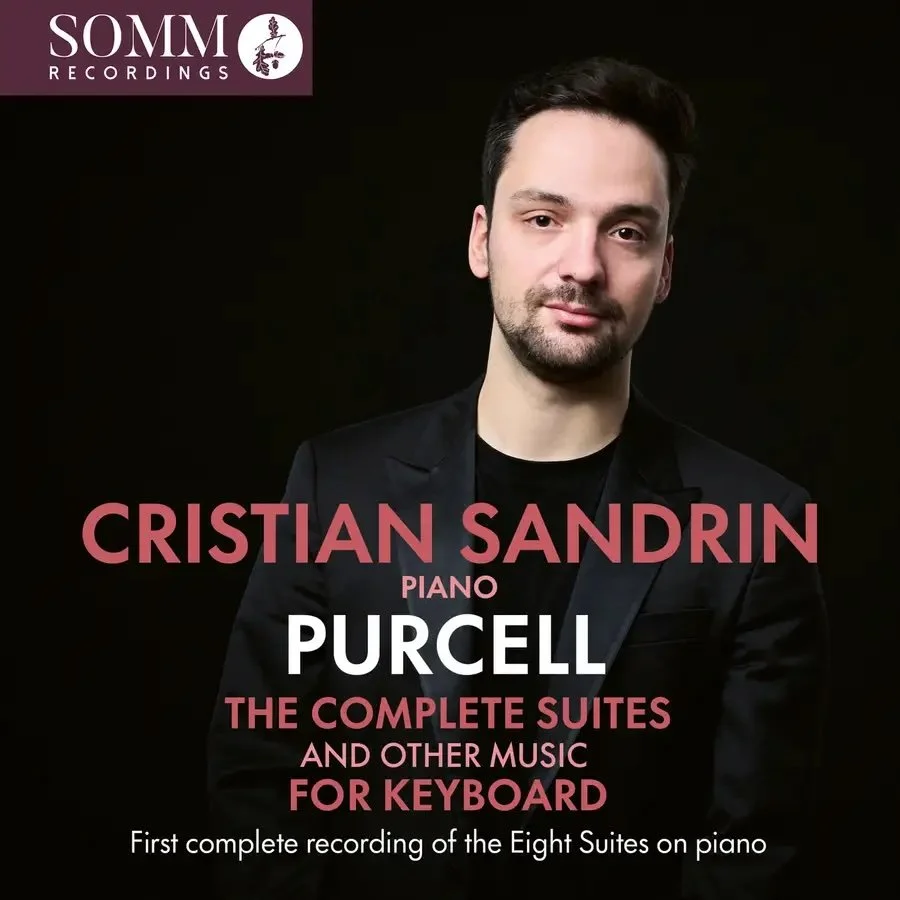“In the first complete recording of Purcell’s eight keyboard suites on the modern piano, Romanian pianist Cristian Sandrin sets the bar impressively high. His accounts blend an instinctive grasp of the Baroque rhetoric with the expressive breadth of the piano, revealing the ever-changing affects of these jewel-like works. (…) Sandrin brings to these performances all the pathos and lyricism of Baroque opera, making a fitting tribute to one of England’s greatest theatre composers”
Instrumental Choice of July 2025
BBC Music Magazine ★★★★★
Tragically, Purcell died at the peak of his career on 21 November 1695 at his home in London. He is believed to have been 35 or 36 years old at the time. A year after his death, Purcell’s widow, Frances, posthumously published A Choice Collection of Lessons for the Harpsichord or Spinet. These eight suites, long overshadowed by his more celebrated theatre works, are the core of Purcell’s keyboard output, shifting from major to minor keys, from humour to seriousness, to create a uniquely expressive musical world.
The suites incorporate French dance forms like the Almand, Corante, and Minuet, and the Spanish Saraband, which Purcell imbued with a quintessentially British idiom. This finds particular expression in movements like a Corante that deftly incorporates tunes from Ireland and Scotland; a brilliant Jigg that seems to catch the listener unawares; and a burly Hornpipe that draws on earlier incidental music.
Cristian Sandrin intersperses Purcell’s posthumously published eight keyboard suites with occasional additions from other works, and his recital concludes with the beautiful Sefauchi’s Farewell. Purcell was deeply impressed on hearing one of the greatest of all castrati, the Italian ‘Sefauchi’ (Giovanni Francesco Grossi), in London. This keyboard work is a tribute from one noble musician to another.
In collaboration with SOMM Recordings, Cristian Sandrin has released the first-ever recording on piano of the eight keyboard suites by one of England’s greatest creative artists, Henry Purcell (1659 –1695).
Henry Purcell was at the height of his powers at the time of the Glorious Revolution of 1688, which saw King William III and his wife Queen Mary II crowned as joint British monarchs. Queen Mary was an avid lover of dance, which led to it being a regular and expected part of Restoration theatrical productions. Purcell’s first great operatic work, Dido and Aeneas from the late 1680s, included no less than seventeen original dances.
Purcell wrote in every form—ranging from theatre and church to concerts and balls—and his music dominated public demand in almost every genre. His success led to requests for music of all kinds, particularly dance movements, either singly or forming parts of suites for the keyboard. At the time, there was a growing fashion for French keyboard music, and Purcell willingly accepted the structural influences from that school. And yet, his music remained infused with the individual expression of an undoubtedly English composer.
“…what intimate and wounded sorrow Sandrin finds in the Almand of the Third Suite, what an eloquent Purcellian journey is the Seventh Almand, and what emotional unrest, like lovers lost in an enchanted wood, he stirs in the Second Prelude. Sefauchi’s Farewell, one of nine extra Purcell pieces drafted in from other sources and distributed here through the suites, is full of tender melancholy (…) what these clever reimaginings are doing is searching for their soul”
“his playing allows the music to speak for itself. Purcell had a gift for melody and for structural use of harmony, and Sandrin demonstrates a perfectly judged balance between being historically informed and sensitively using the scope of a modern piano to make a strong case for exploring beyond the music drama.”
Piano Music Round-Up, Spring 2025
“as this absolutely gorgeous recording by Cristian Sandrin demonstrates, Purcell was a keyboard composer of exceptional skill and taste. [Sandrin limits] his elaborations to stylistically appropriate ornamentation while still bringing in subtle dynamic elements that add a welcome richness to the music. Highly recommended to all collections.”
“a gorgeous album”
Cover photography by Kaupo Kikkas
Producer: Siva Oke
Sound Engineer: Ben Connellan


